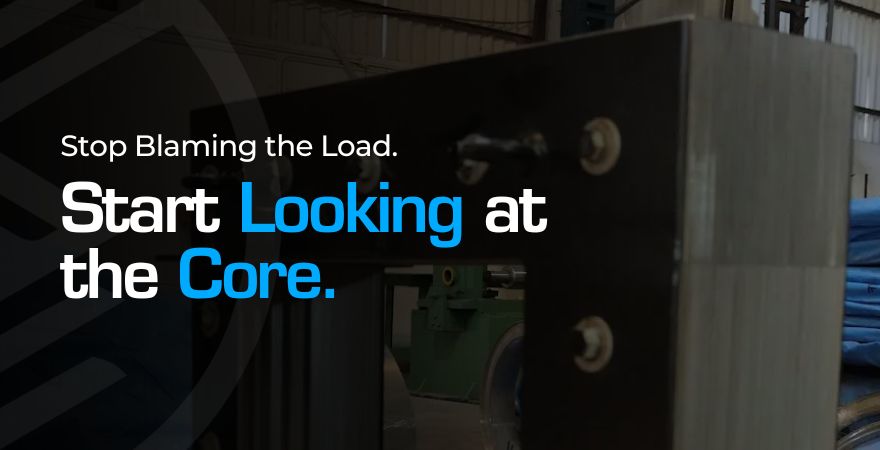How Misconceptions About Transformer Cores Are Costing You Energy and Efficiency
Core loss isn’t just a technical detail, it’s a hidden energy drain that adds up day after day. And if your transformer cores aren’t built right, you’re likely losing power, performance, and profits.
Yet, many in the industry still overlook what actually causes these losses. Misunderstandings about how transformer cores work especially when it comes to CRGO material, stacking, and slitting can quietly undermine transformer efficiency.
At Sarjani Coretech, we’ve spent over 25 years helping transformer OEMs eliminate these inefficiencies. We’ve seen the myths. We know the facts. Now let’s bust the top five.
Myth 1: Core Loss Only Happens Under Load
Reality: One of the most dangerous misconceptions. Core losses made up of hysteresis and eddy current losses occur as long as the transformer is energized, whether or not it’s loaded.
This means no-load losses are real and continuous. Ignoring this fact leads to overlooked inefficiencies that run 24/7. Over time, this contributes to unnecessary energy waste and rising costs especially in systems with multiple transformers on standby.
Myth 2: CRGO Is a One-Size-Fits-All Material
Reality: Not all CRGO (Cold Rolled Grain Oriented) steel is equal. While it may look the same from the outside, its magnetic performance, grain orientation, and core loss values vary by grade and manufacturer.
CRGO is available in different loss classes (e.g., M3, M4, M5), each suited to specific transformer applications. Using the wrong grade, especially mixing grades can result in higher no-load losses, uneven flux distribution, and excess heating.
For optimal performance, always select the CRGO grade that matches your transformer design and application needs. Consistency matters.
Myth 3: All Lamination Coatings Are the Same
Reality: The insulation coating on CRGO laminations isn’t just for handling; it plays a critical role in controlling inter-laminar eddy currents. Different coatings offer different resistance levels, heat tolerance, and bonding properties.
Using the wrong type or reusing damaged laminations can cause short circuits between layers, increase losses, and lead to overheating over time.
That’s why coating type and application quality must match transformer design specifications.
Always check the coating class, compatibility, and visual integrity during core assembly.
Myth 4: Lamination Stacking Doesn’t Affect Efficiency
Reality: How laminations are stacked tightly, evenly, and in proper alignment significantly influences core performance. Poor stacking can result in:
- Damaged insulation coating
- Warped edges
- Increased reluctance and flux leakage
Techniques like mitred and step-lap stacking reduce joint losses and ensure smoother magnetic flow. That’s why transformer manufacturers rely on pre-stressed, tightly controlled stacking from core specialists like Sarjani.
Myth 5: The Core Has Little Impact on Long-Term Energy Consumption
Reality: The core may be passive but it’s active in losses. Core loss runs around the clock, making even minor inefficiencies highly expensive over time.
For example, a transformer core operating at 0.8 W/kg loss vs. one at 1.0 W/kg can save thousands of units of electricity per year multiplied across assets and decades of use. Investing in a high-efficiency core isn’t just smart; it’s strategic.
Sarjani Coretech: Engineering Efficiency at the Core
Sarjani Coretech specializes in:
- CRGO Mother & Slit Coils
- Mitred & Step-Lap Laminations
- Core Frame Assemblies
- Custom Core Designs for Transformer OEMs
With over 25 years of experience, we help clients minimize core loss, maximize transformer life, and meet rising energy demands with confidence.
Final Thought
Transformer efficiency starts at the core, not the winding. Don’t let outdated myths guide your core design decisions. Partner with experts who understand the science behind loss reduction.

